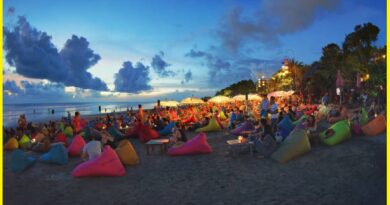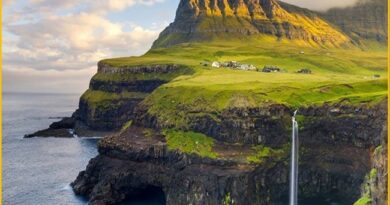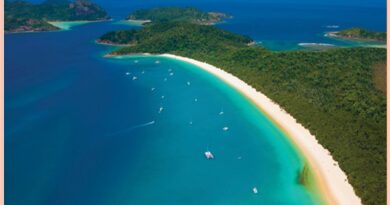Rumtek Monastery: The Spiritual Heart of Sikkim
Rumtek Monastery Sikkim
Rumtek Monastery, also known as the Dharma Chakra Centre, is one of Sikkim, India’s most significant and largest monasteries. Located about 24 kilometers from the state capital, Gangtok, it serves as the main seat of the Karma Kagyu lineage, one of the four major schools of Tibetan Buddhism.
The monastery was originally built in the mid-18th century under the direction of the 9th Karmapa Wangchuk Dorje. The current structure was rebuilt in the 1960s by the 16th Karmapa, Rangjung Rigpe Dorje after he fled Tibet following the Chinese invasion. He established it as his main seat in exile, thus making it a vital center for preserving the Karma Kagyu tradition.
Rumtek Monastery Architecture
Rumtek Monastery Gangtok, also known as the Dharma Chakra Centre, is renowned for its exquisite architecture, which is a prime example of traditional Tibetan Buddhist design. Here are the key architectural elements and features of Rumtek Monastery.
1. Architectural Design and Structure
Main Temple (Tsuglakhang)
Facade: The entrance of the main temple is adorned with intricate woodwork and vibrant colors, characteristic of Tibetan architecture. The facade features detailed carvings and paintings of Buddhist deities and symbols. Interior: Inside the main temple, the walls are decorated with beautiful murals and thangkas (traditional Tibetan Buddhist paintings) depicting various aspects of Buddhist teachings and the lives of important lamas and deities. Statues: The main shrine hall houses a stunning statue of Buddha Sakyamuni, flanked by statues of Guru Rinpoche (Padmasambhava) and the 16th Karmapa, among others. These statues are finely crafted and often adorned with gold and precious stones.
Golden Stupa
Design: The Golden Stupa, or reliquary stupa, is a significant architectural feature of Rumtek Monastery Gangtok. It is designed in a traditional Tibetan style and contains the relics of the 16th Karmapa. Decoration: The stupa is richly decorated with gold and intricate carvings, symbolizing various aspects of Buddhist cosmology and the enlightened mind.
Also Read- Namchi Escapades: A Journey through Sikkim’s Serenity
Monks’ Quarters and Living Spaces
Layout: The monks’ quarters are arranged around the main temple, providing a peaceful and conducive environment for monastic life. These buildings are simpler in design but maintain the traditional Tibetan architectural style. Functionality: The living spaces are functional yet aesthetically pleasing, with wooden beams, colorful decorations, and traditional Tibetan motifs.
Prayer Hall and Assembly Hall
Structure: The prayer hall and assembly hall are large, open spaces where monks gather for prayers, rituals, and teachings. These halls are designed to accommodate large groups and are often adorned with large thangkas, mandalas, and intricate woodwork. Acoustics: The architecture ensures good acoustics for chanting and the recitation of prayers, enhancing the spiritual atmosphere of the space.
College for Buddhist Studies
Design: The college is designed to blend seamlessly with the rest of the monastery complex, featuring traditional architectural elements such as sloping roofs, wooden beams, and colorful decorations. Facilities: It includes classrooms, libraries, and meditation rooms, providing a comprehensive environment for Buddhist education and practice.
Retreat Center
Structure: The retreat center is typically located in a quieter part of the monastery complex, designed to provide a serene environment for intensive meditation and retreat practices. Features: It includes small, individual retreat rooms, meditation halls, and natural surroundings that promote peace and contemplation.

2. Materials and Craftsmanship
Woodwork: The monastery uses extensive wood in its construction, with intricate carvings and traditional joinery techniques. Paintings and Murals: The vibrant murals and thangkas are hand-painted by skilled artists, depicting scenes from Buddhist scriptures and the lives of important lamas. Stone and Metal: Stone and metal are used in the construction of stupas, statues, and certain architectural elements, often adorned with gold leaf and precious stones.
3. Symbolism and Aesthetics
Color Scheme: The monastery’s color scheme is rich and vibrant, primarily using reds, yellows, blues, and greens, each carrying specific symbolic meanings in Tibetan Buddhism. Symbols: Architectural elements are often decorated with Buddhist symbols such as the Dharma Wheel, the Lotus, the Endless Knot, and other auspicious symbols, each representing various aspects of Buddhist philosophy and teachings.
How to Reach Rumtek Monastery
The nearest airport to Gangtok is Pakyong Airport, about 31 kilometers away, or Bagdogra Airport, approximately 124 kilometers away. From Airport to Gangtok: You can hire a taxi to Gangtok from either airport. The journey from Bagdogra to Gangtok takes about 4-5 hours, while from Pakyong it takes about 1-1.5 hours. From Gangtok to Rumtek: Once in Gangtok, follow the road directions mentioned above to reach Rumtek Monastery.
Nearest Railway Station: The nearest railway station is New Jalpaiguri in Siliguri, West Bengal, about 117 kilometers from Gangtok. There are local buses that operate between Gangtok and Rumtek. They are a budget-friendly option but might take longer due to multiple stops. Buses typically depart from the SNT (Sikkim Nationalised Transport) bus station in Gangtok.



